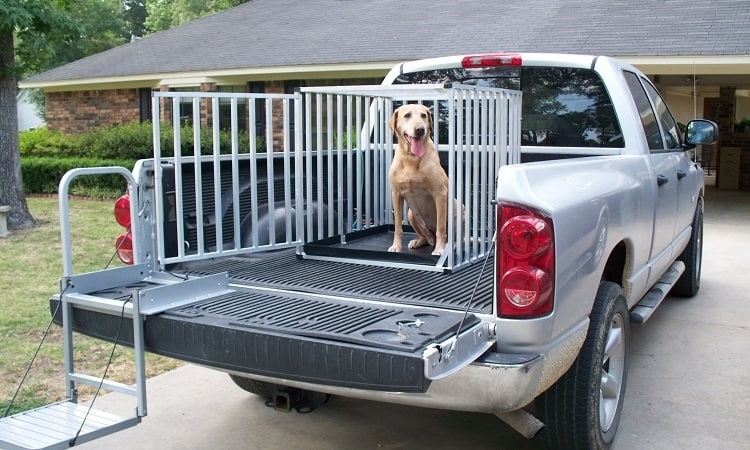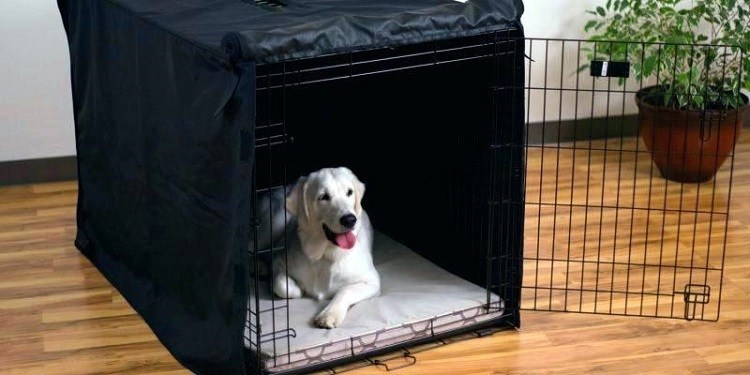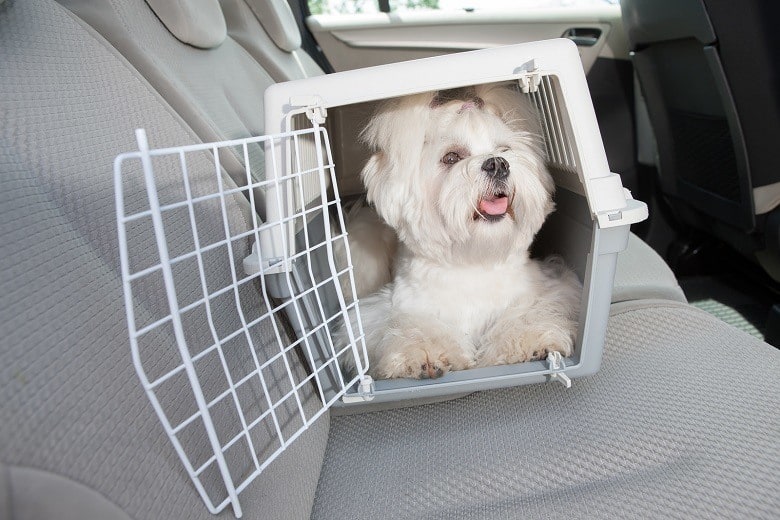Dog crates are an effective way to train your pet, and they come with other benefits like giving them somewhere safe and comfortable to retreat to.
Those new to crate training usually have many questions about the process and are eager to learn how it might benefit them and their pet, as well as what things they need to be aware of.
With a basic understanding of what crate training does and how you can use it to your advantage, you’ll see the many benefits that it offers.
By investing in a quality crate (check out our buying guide) and being committed to the training process, dogs can learn a lot in a short manner of time which makes for a much happier household for everyone.
Are Dog Crates Cruel?

One of the first things people consider when thinking about crate training is whether it’s cruel to their dogs or not.
Although it might seem to a human that being inside of a confined space is constricting, dogs actually enjoy having their own area like this, and according to the Humane Society of the US, this takes advantage of a dog’s natural instincts.
A dog sees their crate as their den, which is part of their natural instinct, and they see it as a place of solitude and comfort. In addition to being used to housetrain them and give them somewhere to sleep, many dogs will voluntarily retreat to their crate throughout the day just to have a break.
You should never leave an adult dog for longer than 8 hours at a time overnight, and 4-6 hours during the day.
For puppies and young dogs, this timeframe is much shorter, and it’s recommended to give them a break every 2-3 hours. Once their training is complete, you’ll only need to use the device as somewhere they choose to go for sleeping and resting, and there’ll be no need to keep it locked.
The Different Types of Dog Crates
Part of effective crate training is choosing the right type of crate to suit you and your dog. These enclosures come in many different shapes and sizes, and there’s no perfect fit for everyone. Consider these types when you’re searching for a new crate to train your dog.
Most dog crates come with the same basic features including a gate or door for entry, comfortable tray in the bottom, and various locking mechanisms.
They are all made to be breathable and allow your dog to see the outside world when they’re closed in.
Should You Ever Cover a Crate When Your Dog’s Inside?

Dog crates are designed to be used as they are and give your pet visibility, but there may be times when covering the crate is necessary.
If you do feel the need to cover a dog’s crate because they are finding it hard to wind down or there’s too much stimulation outside, always follow these rules:
Only ever cover the crate with a lightweight sheet or blanket.
This will allow them to breathe and not feel totally trapped.
Don’t cover the crate as a form of punishment.
Never leave your dog’s crate covered for too long, and once they’ve calmed down you can attempt to take the cover off.
Try to leave a space where the crate isn’t covered so your pet can see the outside world if they need to.
Make sure the cover can’t be reached by your dog and pulled through their cage.
Tips for Dogs Who Chew in Their Crates
Dogs are natural chewers, and especially during their younger years, they use chewing as a way to explore the world around them.
Many people use crate training as a way to stop the damage that occurs at home because of this, but the find that they’re still trying to chew while they’re inside of their crate. Here are some tips you can follow to reduce the rate of chewing from your dog:
Give them an appropriate chew toy that they’re interested in and show them that this is what they should be gnawing on instead.
The toy shouldn’t resemble any household items like shoes or socks that you don’t want them to chew.
Make sure they get plenty of exercise and entertainment, as a common cause of chewing is boredom.
Be realistic about the learning period when you’re dealing with a young dog and don’t be too harsh with your punishments.
Consider finding a natural chewing repellant made especially for dogs and spraying it on certain items, like the bars of their crate to stop them.
Try to figure out why they’re chewing, as some dogs will do this because of fear or anxiety, and work on the cause of the problem first.
An Effective Way to Train Your Pet
Dog crates are one of the most versatile pet accessories you could invest in and one that will yield the greatest results.
These devices help with training your pet, making them feel safe and secure, and even when traveling on the road.
Provided you are following all of the recommendations and never using a crate as a form of punishment, there’s a lot to be gained from having one at home.
Whether it’s a small puppy or large adult dog you’re trying to train, you’ll see an almost instant improvement when you start putting their crate to good use.

